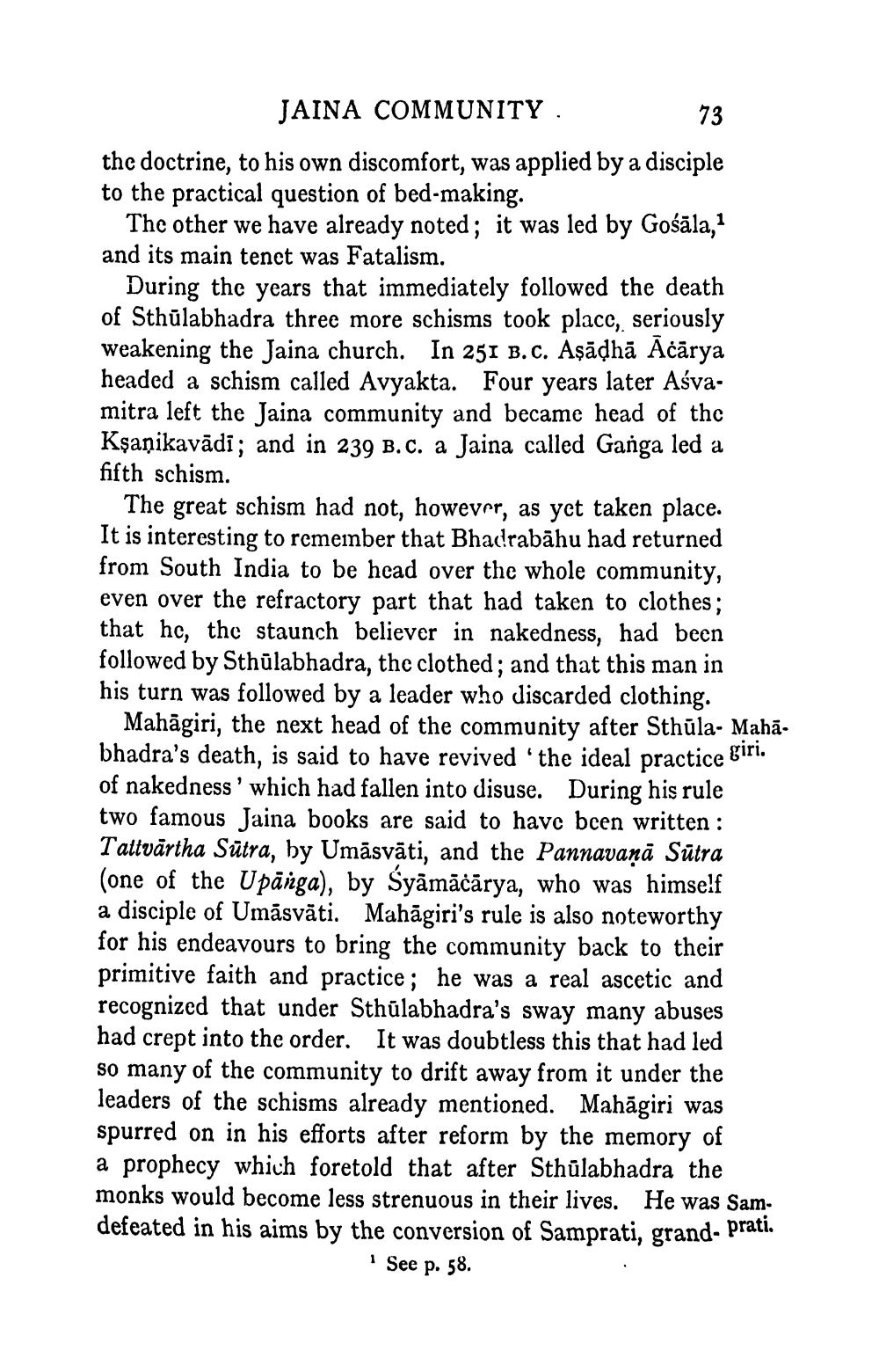________________
JAINA COMMUNITY.
73 the doctrine, to his own discomfort, was applied by a disciple to the practical question of bed-making.
The other we have already noted; it was led by Gośāla,1 and its main tenet was Fatalism.
During the years that immediately followed the death of Sthūlabhadra three more schisms took place, seriously weakening the Jaina church. In 251 B.C. Aşādhā Ācārya headed a schism called Avyakta. Four years later Aśva. mitra left the Jaina community and became head of the Kşanikavādi; and in 239 B.C. a Jaina called Ganga led a fifth schism.
The great schism had not, however, as yet taken place. It is interesting to remember that Bhadrabāhu had returned from South India to be head over the whole community, even over the refractory part that had taken to clothes; that hc, the staunch believer in nakedness, had been followed by Sthūlabhadra, the clothed; and that this man in his turn was followed by a leader who discarded clothing.
Mahāgiri, the next head of the community after Sthūla- Mahā. bhadra's death, is said to have revived 'the ideal practice 2. of nakedness' which had fallen into disuse. During his rule two famous Jaina books are said to have been written: Tattvārtha Sūtra, by Umāsvāti, and the Pannavaņā Sūtra (one of the Upanga), by Syāmācārya, who was himself a disciple of Umāsvāti. Mahāgiri's rule is also noteworthy for his endeavours to bring the community back to their primitive faith and practice; he was a real ascetic and recognized that under Sthūlabhadra's sway many abuses had crept into the order. It was doubtless this that had led so many of the community to drift away from it under the leaders of the schisms already mentioned. Mahāgiri was spurred on in his efforts after reform by the memory of a prophecy which foretold that after Sthūlabhadra the monks would become less strenuous in their lives. He was Samdefeated in his aims by the conversion of Samprati, grand- prati.
See p. 58.




